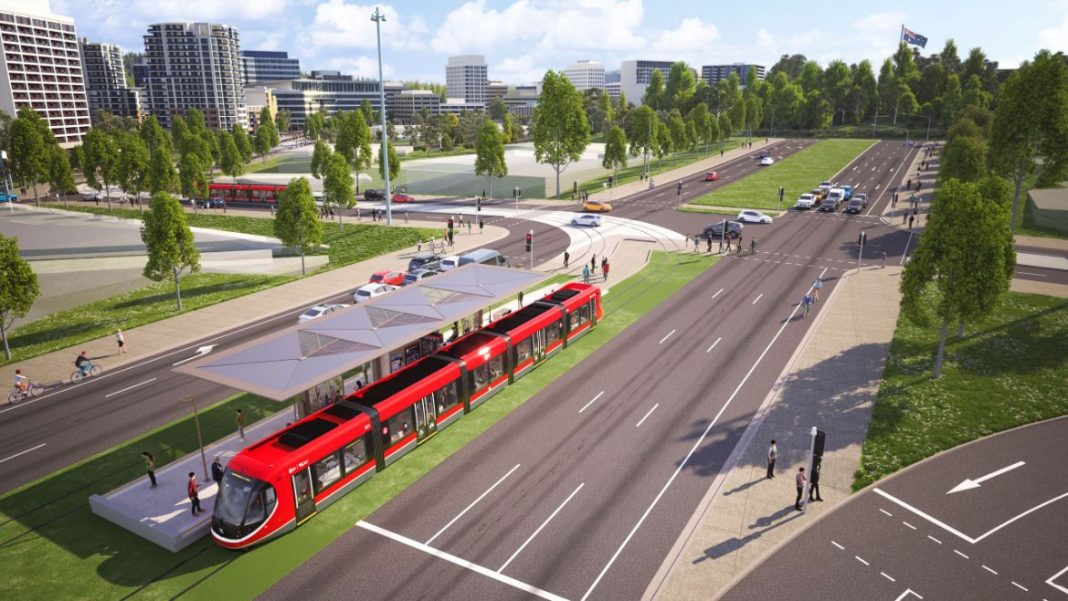Wireless light rail vehicles, grass tracks along Commonwealth Avenue, raising the southern end of London Circuit and a third bridge over Parkes Way are all on the agenda for Canberra’s Light Rail Stage 2A.
Preliminary documentation on the environmental impacts of Canberra’s Light Rail Stage 2A that reveals new details about the three-stop route has been released today.
The community have been invited to comment on the publicly available documents, which is a requirement under the Environment Protection and Biodiversity Conservation Act 1999 (EPBC Act).
The documentation reveals the entire 1.7km route that will track from Alinga Street through City West to Commonwealth Avenue will run wireless.
This means it will no longer require an electricity substation to be built, based on an engineering analysis that’s been completed over the past year.
It will also feature grass tracks along Commonwealth Avenue.
The southern end of London Circuit will be raised to form a level intersection with Commonwealth Avenue, while a third bridge between the existing bridges along Commonwealth Avenue over Parkes Way will also need to be built.
“This is a particularly complex project; we want to see it move forward as fast as possible. It is far more complex than some of the infrastructure projects also being delivered in our city,” Transport Minister Chris Steel said.
A number of traffic modifications will be made to facilitate Light Rail Stage 2A, which include putting a stop to right turn movements onto London Circuit “to enable a right of way for light rail so that it can proceed efficiently through that corridor,” Mr Steel said.
The Edinburgh Avenue extension is almost complete between London Circuit and Vernon Circle, which will also aid traffic flow through City West once Stage 2A is under construction and running.
The Public Transport Association of Canberra (PTCBR) welcomed the release of the preliminary EPBC documentation for Stage 2A, commending the ACT Government’s “careful consideration of the broader environmental and heritage impacts of bringing light rail through Canberra’s city centre”.
“This is evident in the adoption of wire-free technology and grassed tracks along Commonwealth Avenue, which significantly reduces the route’s visual impact and preserves the important Parliament House heritage vista,” said PTCBR Chair Ryan Hemsley.
With Stage 2 set to be built in two phases, ACT Chief Minister Andrew Barr said a lot of the preliminary planning and engineering work to be undertaken for Stage 2B could happen simultaneously with the construction of Stage 2A.
“These are quite detailed matters that go to the sequencing of delivering of particular elements … many things will happen in parallel,” he said.
With the October ACT election looming, the Canberra Liberals are yet to outline their position on Light Rail Stage 2A. They have said they won’t do so until they see a business case for the major project.
However, Mr Barr said the Stage 2A business case won’t be provided before October so as not to reveal to potential construction partners the ACT Government’s bargaining position given contracts won’t be signed until after the election.
“You wouldn’t go into a tender process by outlining all of your particular negotiating parameters. What we want to achieve is a value for money procurement for the Territory,” Mr Barr said.



